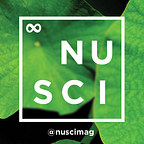The Junction of Science and Spirituality
By Kristina Klosowski, Behavioral Neuroscience, 2022
Belief in a higher power, supernatural being, or divine force- though different in role and representation, consistently spans across diverse cultures and time periods. Thus, from a sociological standpoint, many have argued that human beings are innately religious. But natural scientists have long been divided over whether there is a biological or neurological basis for faith, and more specifically, religion.
Some scientists have claimed to pinpoint a ‘God spot’ in the brain — a chief area where religious or spiritual beliefs would be stored. In contrast, other scientists claim that the complex web of thoughts and emotions involved in religious belief is not limited to just one area of the brain. A common thread among neuroscience research in this area is their methodology, which involves imaging techniques, such as functional magnetic resonance imaging (fMRI). fMRIs detect changes in blood flow to different parts of the brain, which is correlated with an elevated level of activity in that area. Researchers have used a number of techniques in these studies in order to activate or engage areas of the brain involved in religious belief. This could be exposure to content that is designed to evoke spiritual thoughts and feelings, or simply asking them to meditate. Interestingly (and maybe somewhat ironically), there is some evidence that religious experiences can activate the same reward circuits in the brain that are activated by behaviors considered to be high-risk or taboo in our culture, such as sex and illicit drug use.
It is worthwhile to note that this area of study is not an attempt to explain away faith with science, but rather an inquiry to better understand the psychological basis of faith.
Some other areas of the brain that have been implicated are the amygdala (a part of the brain that plays a key role in processing emotions), temporal lobes (involved in vision, memory, sensory information processing, emotion, and comprehension), the Anterior Cingulate Cortex (involved in processing stimuli and assigning control to other regions of the brain), as well as several other regions. Additionally, one research study observed a decrease in activity in the prefrontal cortex, the part of the brain involved in many executive functions. Due to the complex nature of spiritual thoughts and feelings, it is likely that there are many circuits involved in the interactions between the aforementioned brain regions that are responsible for producing these types of thoughts. Some scientists hypothesize that areas of brain activation may even differ based on the particular religion or belief in question.
This research, coined ‘neurotheology,’ is part of a broader field of study that examines at many different levels, the relationship between the brain and theological belief. It is worthwhile to note that this area of study is not an attempt to explain away faith with science, but rather an inquiry to better understand the psychological basis of faith, and why it has persisted as part of our human nature for so many years.
In fact, there is an entire class of chemical substances called entheogens, which are used for such purposes.
An interesting aspect of this field being explored is the chemical induction of spiritual or transcendental states. In fact, there is an entire class of chemical substances called entheogens, which are used for such purposes. These substances, often plant-based, have historically been used by different groups throughout history, such as Native Americans, ancient Greeks, and aztecs, for religious rituals. The use of some of these substances has not died out in modern culture. Magic mushrooms, which today are used recreationally, contain the psychoactive ingredient psilocybin, which produces mind-altering effects when metabolized by the body. These effects can often include “mystical” experiences, which is a broad term that encompasses religious or spiritual experiences or feelings. Mystical experiences induced by hallucinogenic drugs often include feelings of sacredness, oneness with an individual’s surroundings, ecstasy or deep positivity, and a transcendence of time and space. Reported experiences of this phenomena during a “high” spans users of all viewpoints, including those who would not normally define themselves as religious. The biochemical underpinnings for these phenomena are not entirely clear, but psilocybin seems to stimulate serotonin receptors, which is a neurotransmitter involved in mood, emotion, and overall happiness.
Regardless of one’s religious or spiritual beliefs, it is clear that these spiritual experiences, whether naturally or chemically induced, can have fascinating effects on the human brain. Neurotheology is proving to be a piece of the complex puzzle of understanding why humans think and behave the way they do, and as a budding field that has much more to explore.
Social Neuroscience (2018). DOI:10.1080/17470919.2016.1257437
Social Cognitive and Affective Neuroscience (2016). DOI:10.1093/scan/nsv107
Behavioral Neurobiology of Psychedelic Drugs (2018). DOI: 10.1007/7854_2017_474
Neuropsychopharmacology (2019). DOI: 10.1038/s41386–019–0324–9
